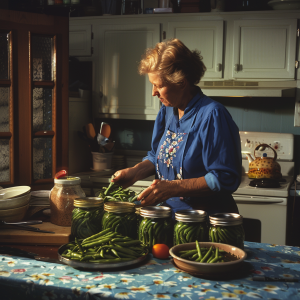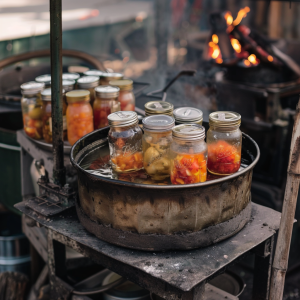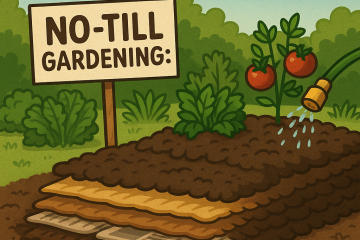
rebel canning does water bath canning of green beans
Rebel Canning: Breaking the Mold in Home Preservation
Are you ready to throw caution to the wind and join the “cannoisseur” revolution? If you’re a stickler for “by the book” canning, you might want to preserve your innocence and skip this article. But for those brave souls willing to venture into the wild west of home preservation in the name of preparedness, buckle up – we’re about to get jarring.
I’ll admit it: I’m a rebel canner. There are several products I preserve that would make the alphabet soup agencies (no, not Google – though they’d probably frown upon it too) clutch their pearls. But don’t worry, I’m not completely off my rocker. I still use a pressure canner and haven’t resorted to the open kettle method (unless the zombie apocalypse hits and I’m out of options).
So, what’s on my rebellious canning menu? Brace yourselves:
- Cream cheese
- Regular cheese
- Milk
- Whole potatoes (with their skin on) and other root vegetables
- Butter and ghee
- Quick breads
- Regular bread
- Sour cream
- Bacon

I do NOT recommend open kettle canning unless you’re out of options
And here’s the kicker – I water bath can my vegetables instead of pressure canning them. GASP! The result? Veggies that taste wonderfully fresh, not mushy. It’s a game-changer, folks.
Now, before you call the canning police, hear me out. I’ve done my homework, consulting with my Amish friends about their time-honored practices and diving into genealogy journals (yes, I’m one of those history buffs too). My philosophy? If it’s canned in stores, I’m going to can it at home. Sure, I might not have the fancy equipment of big companies, but that’s never stopped a determined home canner.
For generations, home canning has followed a tried-and-true method: sterilize jars and lids, fill with your garden’s bounty, seal, and boil for a prescribed time based on acidity levels. Store in a cool, dry place, and I always use the sniff test. Though that’s ineffective with botulism. But in a crisis mode, “by the rules” isn’t always possible and I’m fighting against a potential crisis in my house so I’m going to hone ALL of my canning skills and get in the habit of being competent.
The elephant in the canning room is, of course, botulism. It’s the boogeyman of the preserving world, and for good reason. According to the Centers for Disease Control and Prevention (CDC), the United States sees an average of 110 botulism cases annually, with about a quarter being food-related. Mind you, I don’t think that’s too many cases, do you? Of course when it hits someone you love that may be a different story. But here’s the kicker, only a quarter of those cases are food related. So now we’re talking 27.5 botulism cases that could possibly be relevant to canning! [Source]

Canning makes me happy
But before you swear off canning forever, let’s put things in perspective. While botulism can be serious, modern medical care has dramatically reduced the fatality rate from a historical 50% to about 7%. [Source] In fact, in 2019, there was only one reported death due to botulism. [Source]
So, are you ready to join the “rebeloution”? If you’re feeling adventurous, stick around for more articles and videos on these age-old techniques. And if you’d rather play it safe, that’s cool too – there’s plenty of conventional preparedness wisdom to be found here as well.
Remember, in the world of rebel canning, we preserve food and break rules – but always with a dash of common sense and a heap of respect for food safety. Can on, rebels!


